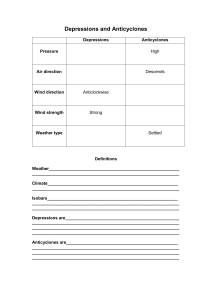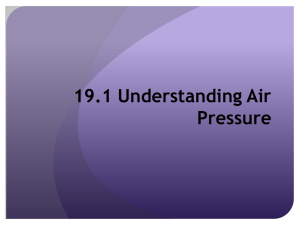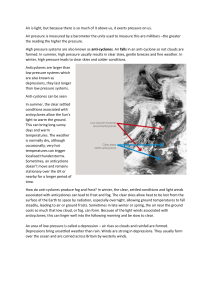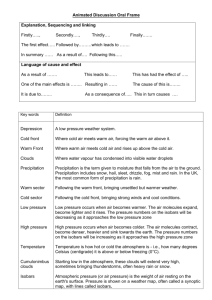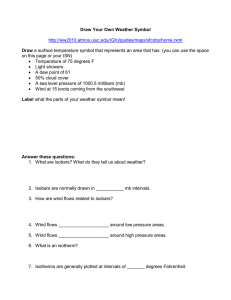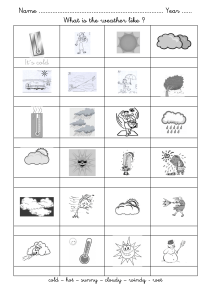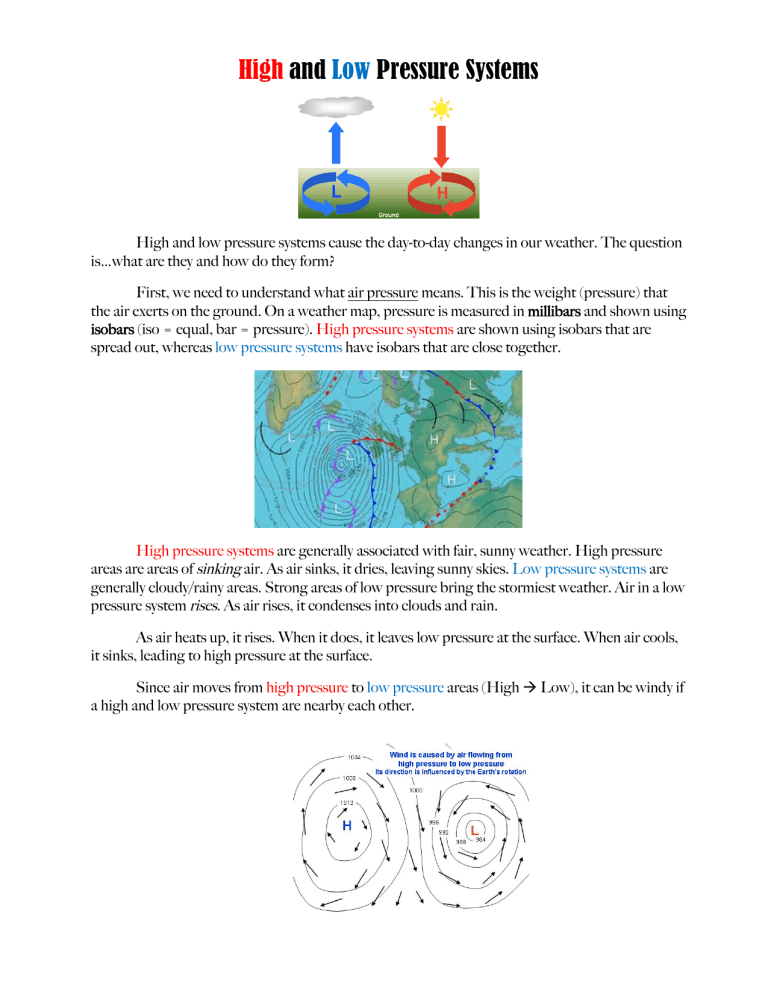
High and Low Pressure Systems High and low pressure systems cause the day-to-day changes in our weather. The question is…what are they and how do they form? First, we need to understand what air pressure means. This is the weight (pressure) that the air exerts on the ground. On a weather map, pressure is measured in millibars and shown using isobars (iso = equal, bar = pressure). High pressure systems are shown using isobars that are spread out, whereas low pressure systems have isobars that are close together. High pressure systems are generally associated with fair, sunny weather. High pressure areas are areas of sinking air. As air sinks, it dries, leaving sunny skies. Low pressure systems are generally cloudy/rainy areas. Strong areas of low pressure bring the stormiest weather. Air in a low pressure system rises. As air rises, it condenses into clouds and rain. As air heats up, it rises. When it does, it leaves low pressure at the surface. When air cools, it sinks, leading to high pressure at the surface. Since air moves from high pressure to low pressure areas (High à Low), it can be windy if a high and low pressure system are nearby each other. High pressure areas are also known as anticyclones. In an anticyclone, the winds tend to be light and blow in a clockwise direction (in the northern hemisphere). Remember that in these high pressure systems/anticyclones, the air is descending (sinking), leaving less clouds – we experience light breezes, settled weather, and sunny skies. Low pressure areas are also known as depressions. In a depression, the air is rising and blowing in a counter-clockwise direction (in the northern hemisphere). Remember that in these low pressure systems/depressions, clouds are forming as the air cools, leading to precipitation. There are usually frontal systems associated with depressions. *photos found using Google search engine*
